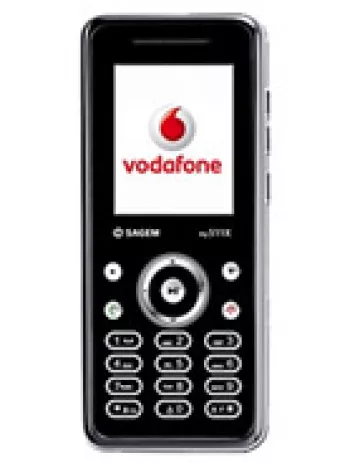
Overview of Vodafone 511
The Vodafone 511 was a feature phone that made its debut in December 2007. Despite its eventual discontinuation, this device represented a period in mobile telecommunication where basic functionality was the primary focus, serving users with straightforward communication needs.
Network and Connectivity
The Vodafone 511 operated on GSM technology, supporting 2G bands of GSM 900, 1800, and 1900. While it provided GPRS connectivity with Class 10 capability, it did not support EDGE connectivity. The phone's basic network capabilities were more than adequate for the time, offering sufficient coverage and reliability for 2G network users.
Design and Build
In terms of design, the Vodafone 511 had dimensions of 106.9 x 46.3 x 10.9 mm and weighed 90 g, making it a compact and lightweight phone. The device utilized a Mini-SIM and was comfortable to hold and use, even with its small size. Its simplistic aesthetic, highlighted by its black color, emphasized functionality over form.
Display
The phone featured a TFT display that supported 65K colors. Though not rich by modern standards, the 1.77-inch screen with a resolution of 128 x 160 pixels (~116 ppi density) was sufficient for basic tasks like checking messages and viewing simple media. Its screen-to-body ratio was approximately 19.9%.
Camera
The Vodafone 511 was equipped with a single 1.3 MP camera on its rear. This basic camera setup was typical for feature phones at the time, offering users the ability to capture simple photos, although it lacked video recording capabilities. Selfies and video calls were not possible, aligning with its aim for basic functionality.
Memory and Storage
The device came with an internal storage of 10MB, which could be expanded using a microSD card via a dedicated slot. This allowed users to store more contacts, messages, and possibly a few small-sized audio files. The phonebook supported entries and call records for 20 dialed, 20 received, and 20 missed calls.
Sound and Alert Features
Equipped with a loudspeaker, the Vodafone 511 allowed for audible notifications and calls. It supported vibration alerts and downloadable polyphonic ringtones, providing some level of customization. However, it lacked a 3.5mm audio jack, limiting media listening options unless through proprietary accessories.
Connectivity Options
The phone's connectivity features included Bluetooth capability, supporting wireless data exchange with compatible devices. It did not support WLAN, positioning services, or have radio capabilities. USB connectivity was provided through a proprietary port, restricting accessory compatibility to specific products.
Messaging and Games
For messaging, the Vodafone 511 supported SMS and MMS functions, enabling both text and multimedia messaging. It was equipped with a WAP 2.0/xHTML browser, allowing limited web access. The device was also Java-enabled (MIDP 2.0), providing access to basic games and downloadable applications.
Battery Life
The Vodafone 511 was powered by a removable Li-Ion battery, giving users the ability to replace it when needed. On standby, the phone offered up to 220 hours of battery life, while talk time was up to 3 hours. This battery performance was standard for feature phones, providing adequate time for basic usage.
Overall Impression
Though considered basic by today’s smartphone standards, the Vodafone 511 was well-suited for users who required a straightforward mobile communication device without the complexities of advanced technology. Its combination of necessary features, durable design, and reasonable price point made it an appropriate choice for many during its time of release.
Key Features of Vodafone 511
- Compact and Lightweight: Dimensions of 106.9 x 46.3 x 10.9 mm and weighs only 90 g.
- Display: TFT screen with 65K colors for vibrant visuals.
- Expandable Storage: Includes microSD card slot for additional storage.
- 1.3 MP Main Camera: Basic photography capabilities.
- Bluetooth Connectivity: Allows for wireless file transfers.
- Messaging: Supports SMS and MMS for versatile communication.
- Java Support: MIDP 2.0 for additional application compatibility.
- Removable Battery: Offers convenience with replaceable Li-Ion battery.
Vodafone 511 Drawbacks
- No EDGE support for faster internet connectivity.
- Discontinued status means no longer supported or available for purchase new.
- Low-resolution display with only 128 x 160 pixels.
- Limited internal storage of 10MB; may require frequent clearing or reliance on microSD for additional storage.
- Main camera only 1.3 MP and lacks video recording capability.
- No selfie camera available.
- No 3.5mm headphone jack for standard audio connectivity.
- No WLAN or Wi-Fi capabilities.
- No positioning or GPS feature.
- No FM radio for on-the-go listening.
- Proprietary USB connection can limit compatibility with standard accessories and chargers.
- Basic sensor capabilities with none specified.
- Short battery life with only up to 3 hours of talk time.
View Also
More Phones
All Rights Reserved +13916 Phones © Mobilawy 2025

























